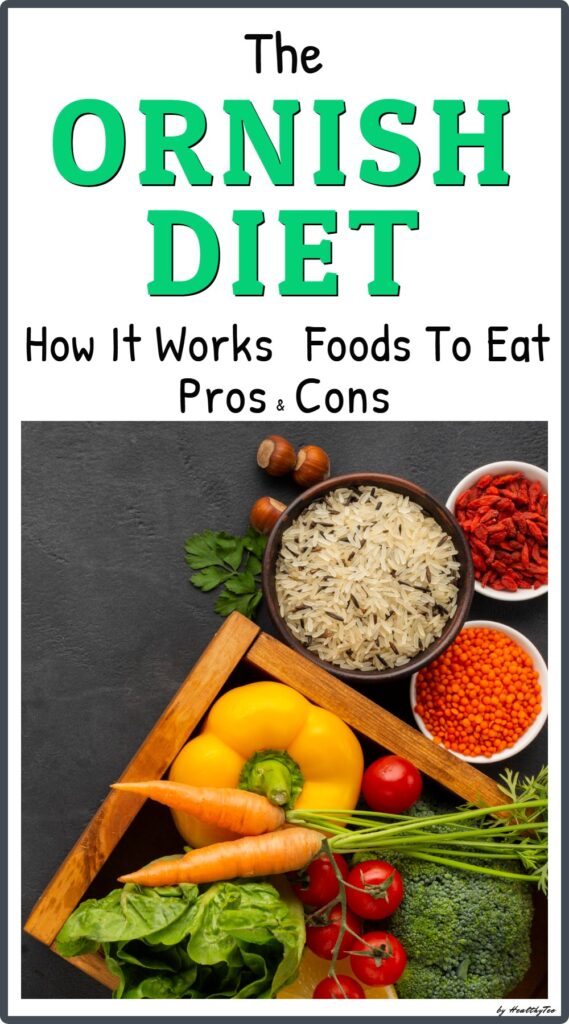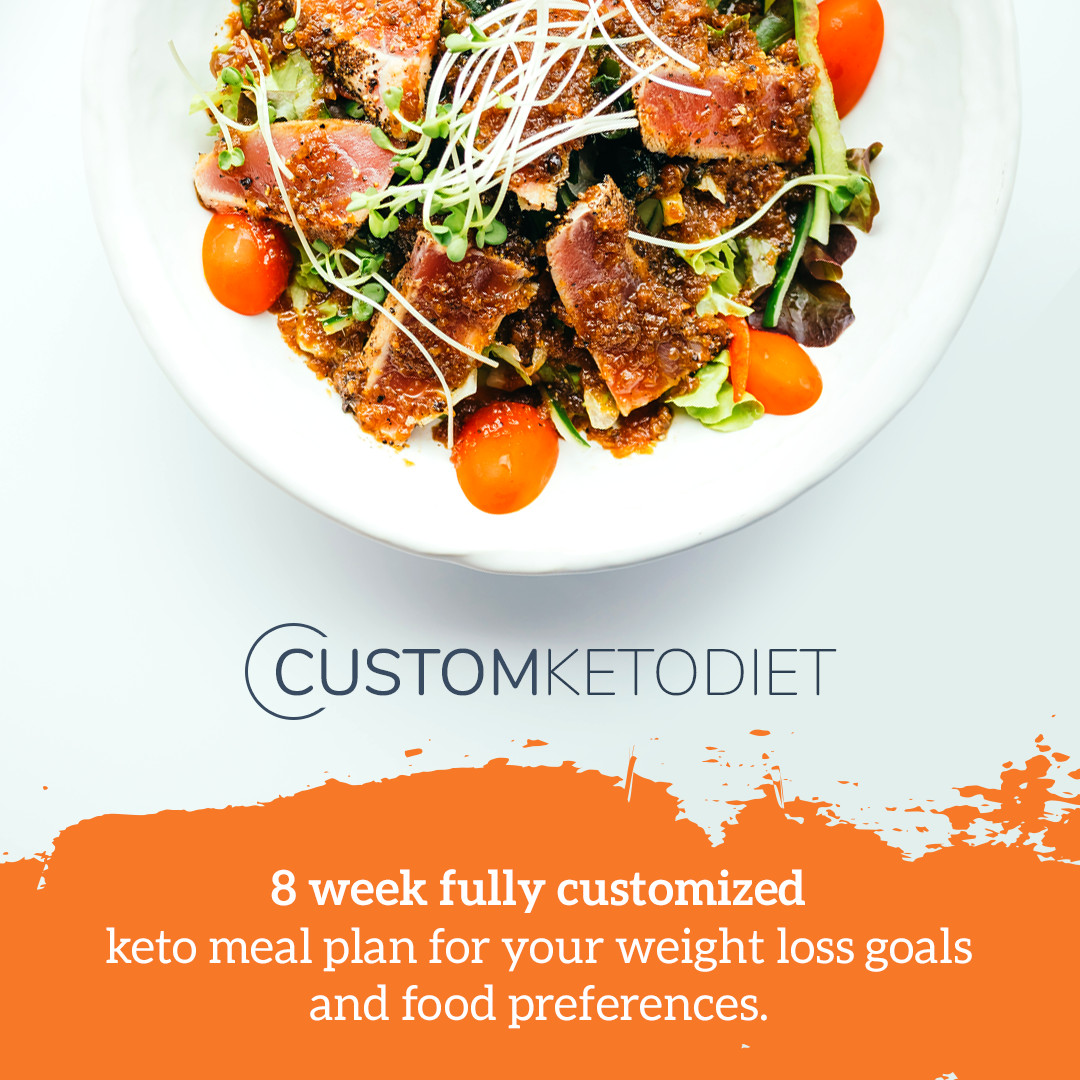On the Ornish Diet, you eat mostly vegetables, fruits, whole grains, legumes, and very little fat. See the basic concept of this diet, as well as the pros and cons of following it!
Obesity affects 36.5% of adults in the United States. A further 32.5% of Americans are overweight. It’s estimated that Americans spend $33 billion dollars per year on products for weight loss.
Here are some interesting statistics about dieting:
- Only 5–10% of dieters maintain a weight loss greater than 10% of their starting weight
- 90% of people who lose weight gain back more weight than they originally lost
- Within 5 years, 98% of people who lose weight gain it back
Weight loss that lasts is often the result of a lifestyle change rather than a “diet” with a start and end date.
If your goal is to lose weight and make some changes to your diet and lifestyle, it is always a good idea to learn more about that diet and consult with a dietitian or a health professional.
We’ve gathered all of the fundamental information and research on the Ornish Diet in this article.
You’ll discover how it works, what to eat and avoid, as well as the benefits and drawbacks of this popular eating plan.
This post may contain affiliate links, which means we may receive a small commission, at no cost to you, if you make a purchase through a link. For more information, please see our disclosure.
What is the Ornish Diet?
The Ornish Diet is a low-fat, vegetarian eating plan that promotes cardiovascular health and weight loss. The diet prioritizes plant-based foods such as fruits, vegetables, whole grains, and legumes.
Dr. Dean Ornish, a clinical professor of medicine at the University of California, San Francisco, and the founder of the nonprofit Preventive Medicine Institute in nearby Sausalito, created this diet plan.
This is more than just a diet; in addition to whole foods and plant-based foods, the Ornish diet emphasizes exercise, stress management, and relationships.
How does the Ornish Diet work?
The Ornish Diet, in contrast to many other diets, is simple and easy to follow.
There is no need to track your nutrient intake or count calories, and no foods, with the exception of most animal products, are completely off-limits as part of the diet.
Ornish divides food into five groups, also known as a “spectrum,” ranging from the healthiest (group 1) to the least healthy (group 5).
Each group on the spectrum follows a set of guidelines:
- Group 1: Predominantly fruits and vegetables, whole grains, legumes, and non-fat dairy products.
- Group 2: Mainly consists of plant-based foods, but with slightly higher levels of monounsaturated and polyunsaturated fats, also known as “healthy” fats. Avocados, nuts, and seeds are examples of these foods.
- Group 3: Includes some seafood, such as salmon, as well as low-fat dairy products.
- Group 4: Foods with fewer nutrients and more fat, as well as animal products. Poultry, whole milk and dairy products, mayonnaise, cakes, cookies, and pastries are examples of these foods.
- Group 5: At the opposite end of the spectrum and the least healthy, has the highest levels of saturated fat and trans-fatty acids, or unhealthy fats. This category includes fried foods, red meat, and a variety of other high-fat foods.
Depending on your health needs and goals, you can determine where you fall on the spectrum and make dietary changes as needed.
As previously stated, the Ornish Diet, unlike other diets, focuses on the mental aspect of weight loss by incorporating stress management techniques. Dr. Ornish’s program emphasizes stress reduction, and he recommends deep breathing, yoga, and meditation.
Dr. Ornish also recommends a variety of exercises such as resistance training, stretching, and aerobic workouts. Ornish recommends 30 minutes of aerobic activity per day or an hour every other day, as well as resistance or strength training 2-3 times per week.
Finally, Dr. Ornish claims that spending time with those you love and respect, as well as leaning on them for support, helps to improve your health.
For more details, consult any of Ornish’s books, including the original 2007 book “The Spectrum,” in which Ornish outlines your nutrition, exercise, stress management, and emotional support options as a guide to achieving any goal, from weight loss to preventing or reversing chronic diseases.
Foods to eat and avoid
The Ornish Diet is about making better food choices rather than consuming fewer calories.
The program provides two distinct plans: a lenient prevention diet and a stricter reversal diet.
The prevention diet gives people more flexibility depending on their personal goals and can include moderate amounts of fish, skinless chicken, avocados, nuts, and seeds.
Guidelines for the reversal diet, on the other hand, include consuming no more than 10% of calories from fat and no more than 10 milligrams of cholesterol per day. It also recommends avoiding meat, fish, poultry, and caffeine (except for green tea), as well as limiting sugar, sodium, and alcohol.
Both eating plans advise avoiding saturated fat from animal proteins and full-fat dairy.
Foods to eat
- Vegetables: asparagus, broccoli, cauliflower, kale, cabbage, peppers, garlic, onions, spinach, carrots, zucchini, etc.
- Fruits: apples, kiwi, bananas, oranges, berries, pomegranate, melons, pears, apricot, etc.
- Legumes: chickpeas, kidney beans, lentils, black beans, lima beans, pinto beans
- Protein sources: tempeh, tofu, egg whites
- Herbs and spices: turmeric, coriander, garlic, cumin, cilantro, cinamon, parsley, nutmeg
Foods to limit
The diet also allows for a limited amount of the following foods:
- Dairy products (2 or fewer servings per day): non-fat yogurt, skim milk
- Nuts and seeds (3 or fewer small servings per day): chia seeds, almonds, walnuts, cashews, pecans, flax seeds, pumpkin seeds
- Fats: olive oil, avocados, canola oil, olives, butter, vegetable oil, coconut oil
- Low-fat packaged foods: whole grain cereals, whole grain crackers, veggie burgers
- Refined carbs (2 or fewer servings per day): white pasta, crackers, biscuits, white bread, pancakes, white rice, honey, agave, brown sugar, white sugar
- Caffeinated beverages: up to one cup of coffee or two cups of black tea/decaf coffee per day
Foods to avoid
- Meat: beef, lamb, goat, veal
- Seafood: salmon, mackerel, tuna, sardines, shrimp, lobster
- Poultry: chicken, turkey, duck, goose
- Egg yolks
- Fried and processed meat products
Sample meal plan
The Ornish Diet does not require calorie counting, eating on a specific schedule, or combining foods in specific ways. You can eat as much as you want, whenever you want as long as you eat approved foods.
Keep in mind that this is not an all-inclusive meal plan, and if you follow the diet, you may discover that other meals work better for you.
Day 1
- Breakfast: egg white and vegetable frittata; roasted potatoes, strawberries
- Lunch: lentil chili; green salad with balsamic vinegar
- Dinner: green salad with olive oil and vinegar; spinach and mushroom lasagna made with wheat noodles; roasted asparagus
Day 2
- Breakfast: egg white vegetable scramble; whole-grain bread; mixed berries; non-fat milk
- Lunch: bell peppers stuffed with beans, bulgur, tomatoes, onions, kale
- Dinner: chickpea curry with couscous and a side salad
Day 3
- Breakfast: whole-grain cereal with fat-free yogurt and orange juice
- Lunch: zucchini noodles with pesto and cannellini meatballs
- Dinner: Bread with tomatoes and capers; whole-meal pasta with vegetables; peaches in wine for dessert
Ornish Diet: Pros and Cons
The Ornish Diet, like many other diet plans, has benefits and downsides.
Pros of the diet
- Weight loss
According to a 2005 clinical trial of 20 people, following the Ornish Diet for one year resulted in an average weight loss of 7.5 pounds (3.3 kg), which was greater than other popular diets such as Atkins, Weight Watchers, and the Zone Diet.
Similarly, a 1-year study found that 76 participants who followed the Ornish Diet lost an average of 5 pounds (22 kg).
- Accesibility and easy to follow
Unlike other diet plans that require you to carefully count calories or track your nutrient intake, the Ornish Diet requires little effort and is relatively simple to follow.
This diet does not necessitate the consumption of any specialty foods, and the accompanying foods are widely available. They can be more expensive at times (ex. quinoa pasta vs. traditional versions), but you save money by avoiding meat.
Because the diet isn’t overburdened with complicated rules and regulations, it’s simple to follow in the long run.
- Limits saturated fat and sugar
Although eliminating saturated fats from the diet is not necessary, health experts agree that limiting these fats may improve heart health.
The American Heart Association recommends that you consume no more than 5-6 % of your daily calories from saturated fat, which equates to about 13 grams per day if you consume 2000 calories.
Furthermore, sugar consumption, particularly added sugar, is linked to negative health outcomes. The Ornish Diet reduces sugar consumption, which may benefit overall health.
- Satiety
The fact that you will get the recommended amount of fruits, vegetables, and fiber for an adult based on the USDA’s dietary guidelines is a big plus for the Ornish plan.
The Ornish Diet restricts the types of foods consumed but not the amounts. Eating plenty of fruits, vegetables, and whole grains can usually satisfy hunger.
Cons of the diet
Though the Ornish Diet has several potential benefits, there are some downsides to consider.
- Macronutrient imbalance
For starters, it contains very few healthy fats, accounting for less than 10% of total daily calories. This may result in a higher carbohydrate intake, which may be detrimental to someone with pre-diabetes or diabetes.
Furthermore, this low fat intake may make it difficult to absorb fat-soluble vitamins. To help optimize health, most health experts recommend getting 20-35 percent of your total daily calories from fat.
- Micronutrient deficiency
It’s important to remember that eliminating meat and certain animal products from your diet can increase your risk of nutritional deficiencies.
According to studies, vegetarian diets are lower in important nutrients such as calcium, vitamin B12, and zinc.
Monitoring your intake of these key vitamins and minerals, as well as eating a variety of nutrient-dense fruits, vegetables, whole grains, and legumes, can help you meet your needs while following the Ornish Diet.
Supplements may be required to meet the body’s requirements for these vitamins and minerals.
- Sustainability and time commitment
Because of the restrictions on fats, refined carbohydrates, caffeine, and alcohol, some people may find it difficult to stick to this diet over time. It is intended to be a permanent change, not a temporary one, which is a significant adjustment.
In addition, eating vegetarian can necessitate a significant amount of preparation and cooking time. You’ll have to learn to cook without meat and saturated fats.
How to start with the Ornish Diet
Because both spectrums involve limiting animal proteins, start by swapping chicken and beef for plant-based proteins like tofu, beans, lentils, or tempeh.
The Ornish Diet, like the Flexitarian Diet, encourages you to eat more fruits, vegetables, and whole grains at meal and snack times.
If you’re following a prevention plan that allows for some healthy fats, make sure to exercise portion control with nuts, avocados, and olive oil to avoid consuming too many calories.
If you’re following the reversal diet plan, consult with a registered dietitian who is familiar with the Ornish Diet to ensure you’re getting enough calories and nutrients every day.
In addition, if you want to learn more about this diet, Dr. Ornish has another book called “UnDo It” which is a detailed study on how simple lifestyle changes can reverse most chronic diseases.
There is also a book called “Everyday Cooking with Dr. Dean Ornish” – 150 easy, low fat, high flavor recipes – that can be very helpful with recipes on the Ornish Diet.

Final thoughts
The Ornish Diet is a low-fat vegetarian diet that may aid in weight loss and may help prevent chronic disease. This diet plan also includes exercise and stress management, both of which are beneficial.
Despite the benefits, you should be aware of the potential drawbacks of this diet, such as consuming less fat, the possibility of nutritional deficiencies due to the absence of meat and animal products, and the potential difficulty to follow in the long term.
It is always a good idea to consult with your doctor or a registered dietitian before making drastic changes to your daily diet. They will demonstrate to you what is best for you.
Every diet is not for everyone, and each person is different, with different weight loss goals and needs.
Disclaimer: The information on this website is for general informational purposes only and is not intended to be medical advice, medical diagnosis, or medical treatment. Before making any dietary changes, you should contact your doctor or another health care expert.




